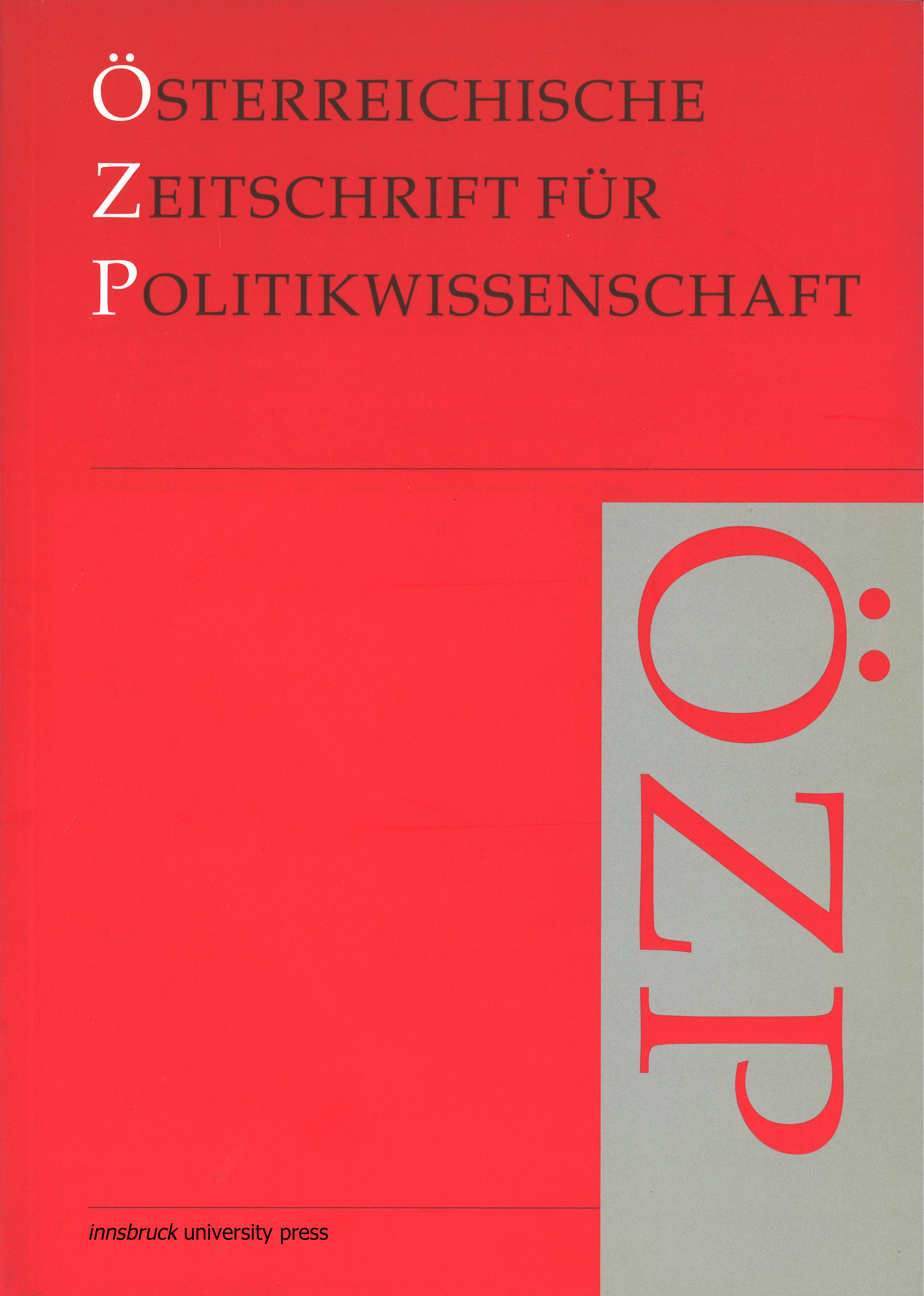The concept of leadership in Central Europe: Discussing the Austrian and Polish cases
DOI:
https://doi.org/10.15203/ozp.862.vol35iss2Keywords:
Central Europe, Austria, Poland, foreign policy, diplomacy, leadershipAbstract
Der Artikel analysiert in komparativer Perspektive österreichische und polnische Außenpolitik in Bezug auf Mitteleuropa. Mitteleuropa wird hier als ein Kern dargestellt, bestehend aus Österreich, der Visegrad- Gruppe, Slowenien und potenziell auch Kroatien. Der Artikel wird eingeleitet mit einer kurzen Beschreibung der Entwicklung von Aussagen und Prioritäten der österreichischen und polnischen mitteleuropäischen Außenpolitik von 1989 bis heute. Besondere Aufmerksamkeit gilt dabei den letzten Jahren. Obwohl Österreich und Polen verschiedene Typen von Ländern darstellen, haben (oder hatten) beide eine Führungsposition in Mitteleuropa angestrebt. In den letzten 15 Jahren haben beide Staaten wiederholt versucht, diese Rolle einzunehmen. Die Autoren sind der Ansicht, dass die österreichischen Ambitionen, eine solche Rolle zu spielen, aus der EU-Mitgliedschaft Österreichs hervorgeht. Anderseits sieht sich Polen als regionale Führungskraft, dessen Position auf dem offensichtlichen Beitrag Polens zur europäischen Sicherheit und Stabilität beruht. In anderen mitteleuropäischen Ländern werden keine ähnlichen Leadership-Tendenzen beobachtet. Im Vordergrund steht die Analyse dieser Themen im Kontext des diplomatischen und politischen Umfelds der mitteleuropäischen Länder. Ebenso werden die Perspektiven der EU und der NATO zur Diskussion gestellt. Der Beitrag endet mit einer vergleichenden Erwägung einer möglichen Führungsrolle Österreichs bzw. Polens im mitteleuropäischen Kontext.Downloads
Issue
Section
License
The OZP is the authorized quarterly publication of the Österreichische Gesellschaft für Politikwissenschaft (ÖGPW, Austrian Political Science Association)
The author of an article (in case of multiple authors: the corresponding author, responsible for releasing this material on behalf of any and all co-authors) accepted to be published in the OZP hereby acknowledges the following Copyright Notice:
- The author retains the copyright to the article.
- It is the responsibility of the author, not of the OZP, to obtain permission to use any previously published and/or copyrighted material.
- Publication of a submitted text is dependent on positive results from the peer reviewing. In such a case, the OZP editors have the right to publish the text.
- In case of publication, the article will be assigned a DOI (digital object identifier) number.
- The author agrees to abide by an open access Creative Commons Attribution (CC BY nc) license. The license permits any user to download, print out, extract, reuse, archive, and distribute the article in any non-commercial way, so long as appropriate credit is given to the author and source of the work.
- The license ensures that the author’s article will be available as widely as possible and that the article can be included in any scientific archive. In order to facilitate distribution, the author agrees that the article, once published, will be submitted to various abstracting, indexing and archiving services as selected by the OZP.
- In addition, the author is encouraged to self-archive the article, once published, with reference to the place of the first publication.
- After the contribution appears in the OZP, it is still possible to publish it elsewhere with reference to the place of the first publication.
- The finished article, if published, will include a correspondence address (both postal and email) of the author.
- If written under the auspices of a grant from one or more funding agencies, such as FWF (Austrian Science Fund), ERC (European Research Council), and Horizon 2020 (EU Framework Programme), an article accepted for publication has to be deposited in an Open Access archive. The OZP’s archiving policy is compliant with these provisions. (In case the article derives on funding from a different source, the author is responsible to check compliance of provisions.)




